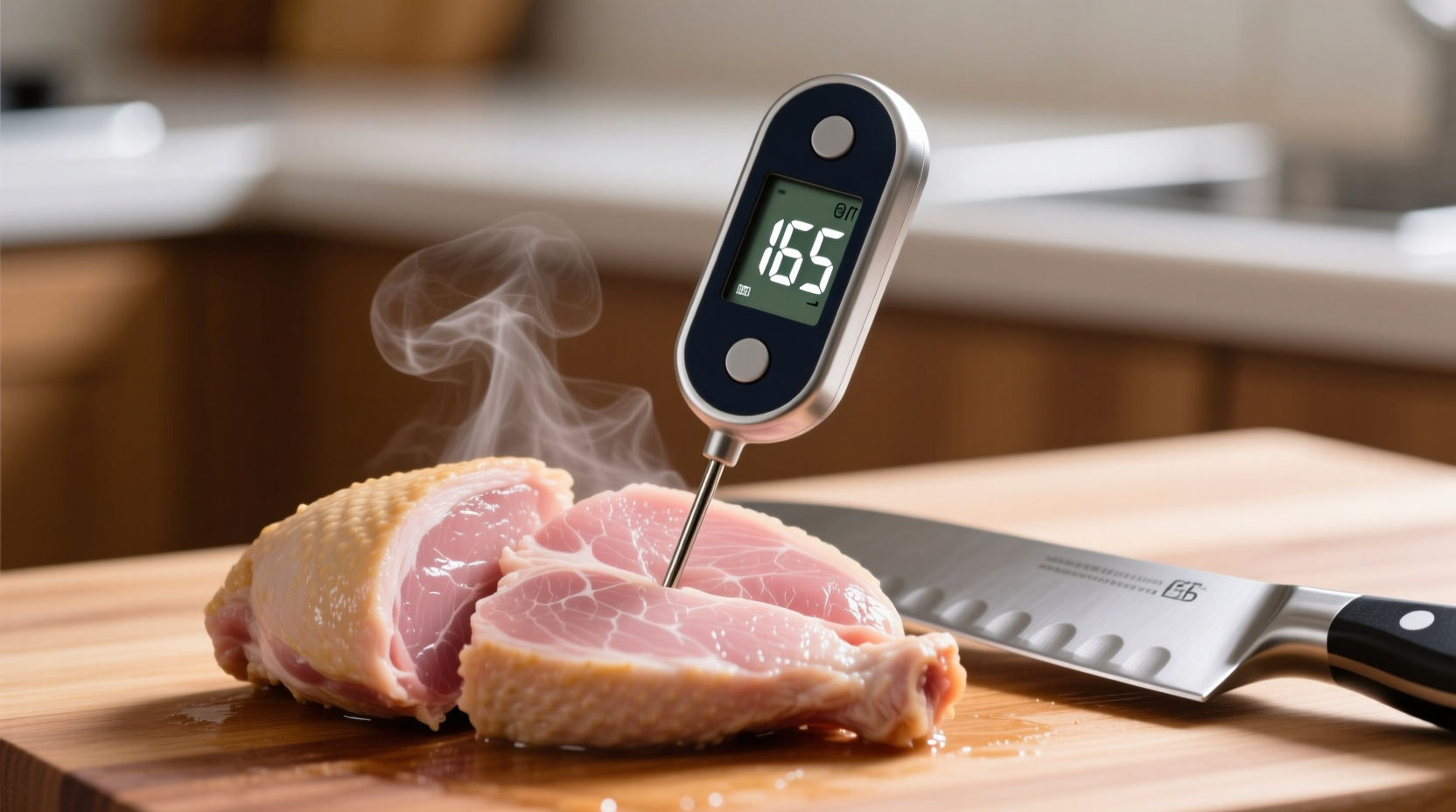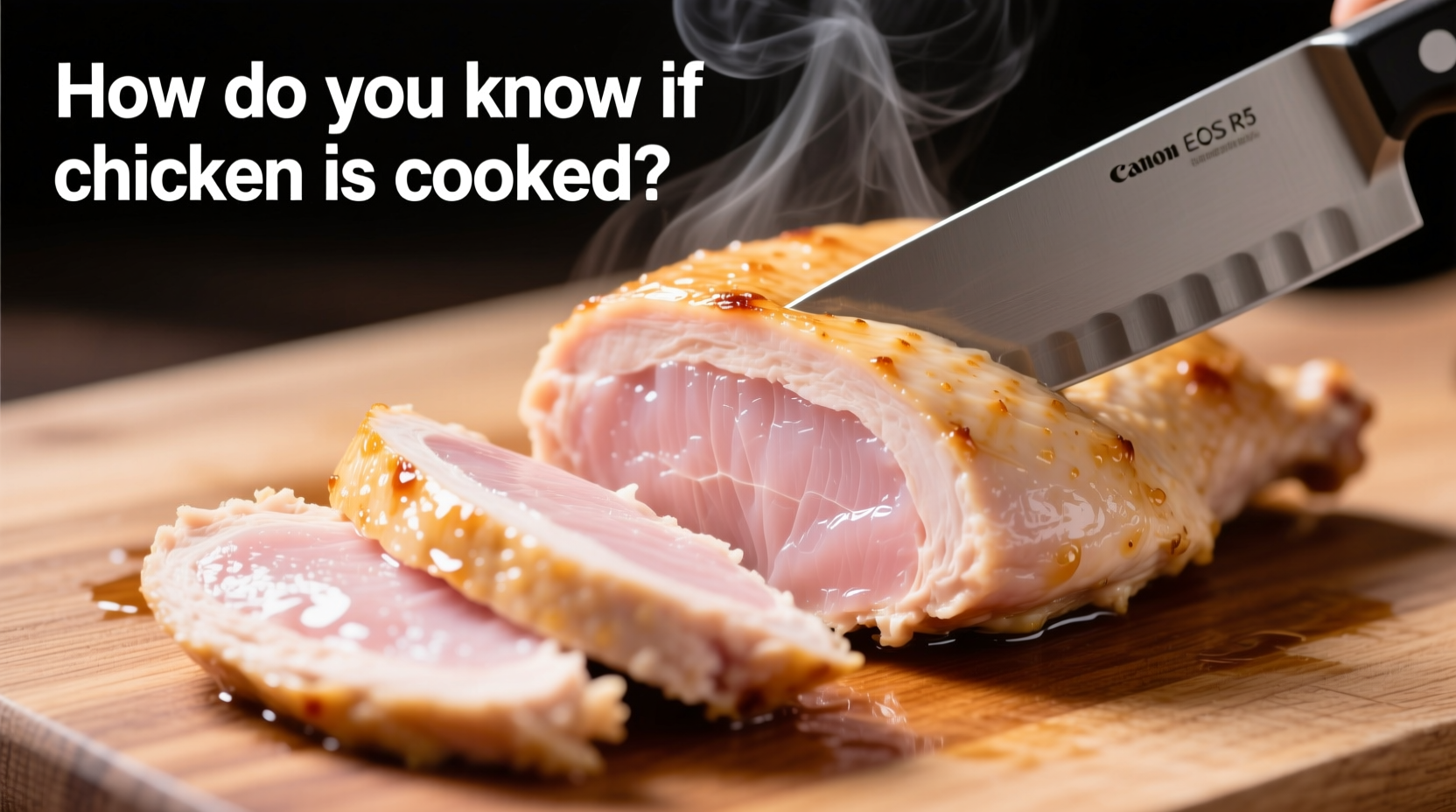Nothing ruins a meal faster than undercooked chicken—or worse, makes someone sick. Each year, foodborne illnesses from poultry hospitalize thousands. As a home cook, you deserve confidence in your kitchen. This guide delivers exactly what you need: science-backed methods to verify chicken doneness, avoiding guesswork while preserving flavor and texture.
Why Temperature Beats Guesswork Every Time
For decades, cooks relied on visual cues alone—but Salmonella bacteria can survive in chicken that appears cooked. The USDA's Food Safety and Inspection Service mandates 165°F (73.9°C) as the minimum safe internal temperature because it instantly destroys harmful pathogens. This standard emerged from rigorous food science research tracking bacterial death rates at various temperatures.
| Temperature | Pathogen Status | Texture Result |
|---|---|---|
| 140°F (60°C) | Salmonella survives 35+ minutes | Rare, unsafe |
| 150°F (65.5°C) | Salmonella dies in 3 minutes | Medium, still risky |
| 165°F (73.9°C) | Instant pathogen destruction | Safe, juicy when rested |
Step-by-Step: Measuring Temperature Correctly
Many home cooks check temperature incorrectly. Follow these steps for accuracy:
- Choose the right thermometer—Instant-read digital thermometers (like ThermoWorks models) provide readings in 3-5 seconds
- Target the thickest part—Insert probe into meaty areas away from bone (thighs, breasts)
- Avoid false readings—Don't touch bone, fat, or cooking surface with the probe tip
- Check multiple spots—Especially with irregular cuts like wings or bone-in pieces
Pro tip: Calibrate your thermometer monthly using ice water (should read 32°F/0°C) or boiling water (212°F/100°C at sea level).
Visual & Tactile Indicators (When Thermometer Isn't Available)
While temperature is definitive, these secondary signs provide useful context:
- Juices run clear—No pink or red tint (note: turkey juices may stay pink even when safe)
- Texture firms up—Meat feels springy, not squishy when pressed
- Color change—No translucent appearance in thicker cuts
Warning: Don't rely solely on color. Chicken can appear browned yet remain undercooked inside, or stay slightly pink when fully safe (due to myoglobin reactions).

Common Mistakes That Compromise Safety
Even experienced cooks make these critical errors:
- Testing too early—Opening the oven or grill frequently drops temperature
- Ignoring carryover cooking—Chicken continues cooking 5-10°F while resting
- Single-spot checking—Especially problematic with bone-in or stuffed poultry
- Using dull thermometers—Old analog models often have 5-10°F margin of error
Special Considerations by Cut
Different chicken parts require tailored approaches:
- Breasts—Most prone to drying out; remove at 160°F then rest to 165°F
- Thighs & drumsticks—Can handle higher temps (up to 175°F) for tender results
- Whole birds—Check multiple zones: breast, thigh, wing joint
- Ground chicken—Requires 165°F throughout (no medium-rare option)
Remember: Dark meat takes longer to cook than white meat. When roasting whole chickens, position birds breast-side up to protect leaner meat.
The Critical Resting Period
Never skip the 5-10 minute rest after cooking. This allows:
- Temperature equalization (carryover cooking completes the process)
- Juice redistribution for maximum tenderness
- Final pathogen elimination in marginally undercooked spots
Cover loosely with foil during resting—trapping too much heat can cause overcooking.
When Visual Cues Fail: The Science Explained
Many trust the "no pink" rule, but food scientists at USDA's Agricultural Research Service confirm chicken can remain slightly pink at 165°F due to:
- Nitrite curing in processed products
- Reaction with oven gases in gas grills
- Natural pigment variations in young birds
Conversely, chicken can appear white yet harbor live pathogens if not properly heated throughout.
Practical Verification Checklist
Before serving chicken, verify using this sequence:
- Measure thickest section with calibrated thermometer
- Confirm 165°F in multiple spots (especially near bone)
- Check for clear juices when pierced
- Press to verify firm, springy texture
- Allow proper resting time before cutting
This multi-point verification system catches errors single-method approaches miss.











 浙公网安备
33010002000092号
浙公网安备
33010002000092号 浙B2-20120091-4
浙B2-20120091-4